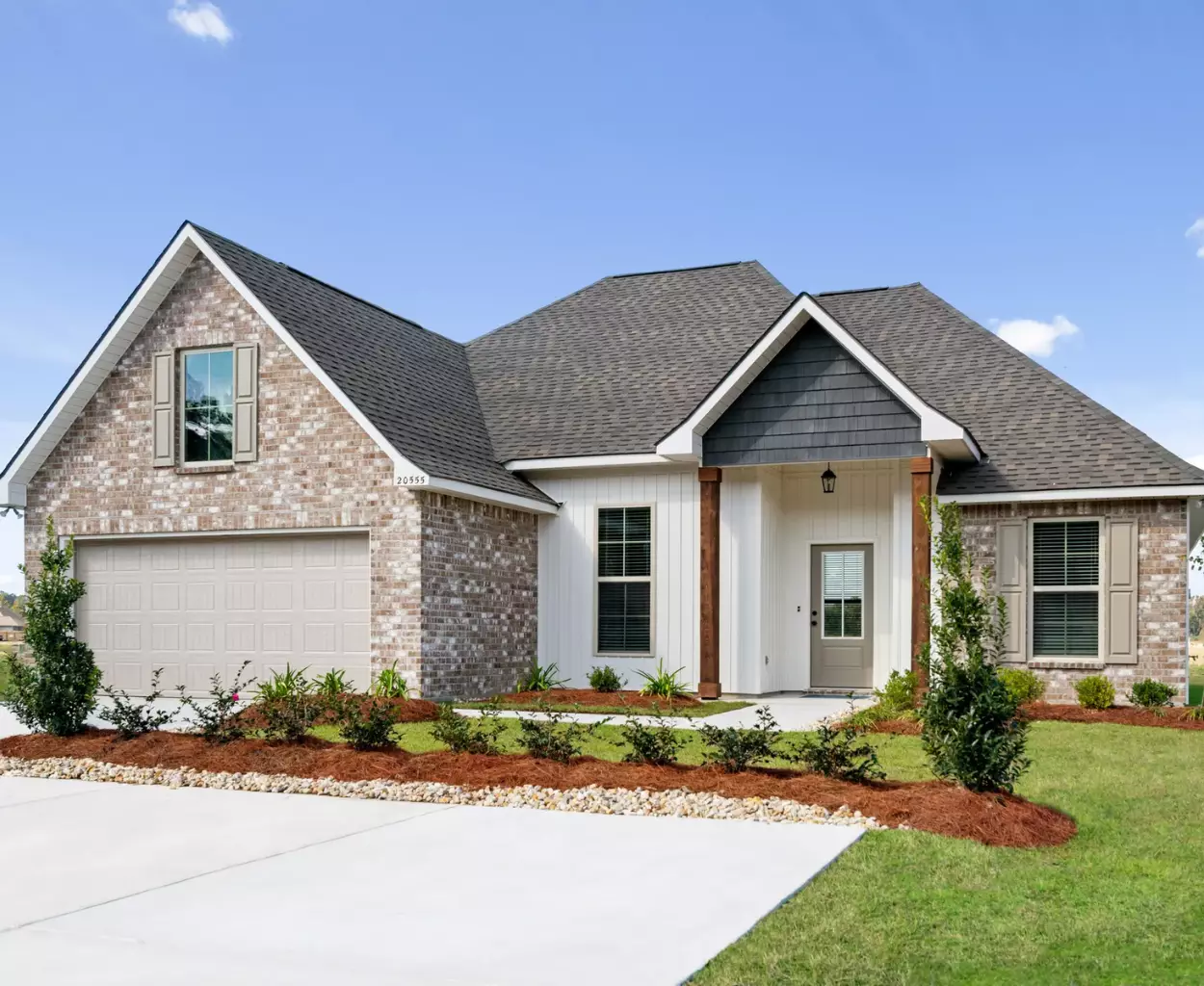The Unique Housing Story of Florida
From the panhandle to the Keys, Florida’s housing landscape is as diverse as its geography. Each region tells a different story, reflecting the state’s rich cultural tapestry, economic dynamics, and unique environmental challenges.
Average Home Size and Square Footage in Florida
Regional Breakdown of Florida Home Sizes
Miami and South Florida
Average home size: The average square footage ranges from 2,100 to 2,350 square feet
Characteristics:
- International cultural influences
- Urban and suburban mix
- Luxury condominium developments
- Diverse architectural styles
Orlando Metropolitan Area
- Average home size: 2,250-2,500 square feet
- Highlights:
- Tourism and theme park industry impact
- Growing tech and service sectors
- Family-friendly neighborhoods
- Many homes feature a dedicated family room, perfect for socializing and relaxation.
- Newer residential developments
Tampa Bay Region
- Average home size: 2,200-2,450 square feet
- Unique features:
- Coastal and suburban living
- Growing business market
- Mix of historic and modern homes
- Retirement community influences
Jacksonville and Northeast Florida
- Average home size: 2,300-2,550 square feet
- Characteristics:
- More spacious lot sizes
- Military and maritime industry impact
- Traditional Southern architectural styles
- More affordable housing market
Panhandle Region
- Average home size: 2,050-2,300 square feet
- Highlights:
- Rural and suburban blend
- More traditional home designs
- Lower population density
- Agricultural and military community influences
Factors Influencing Home Sizes in Florida
Environmental Considerations
- Hurricane-resistant design
- Flood zone requirements
- Coastal living adaptations
- Climate-responsive architecture
Economic Drivers and Affordable Housing
- Tourism industry
- Retirement community growth
- Technology and service sectors
- Agriculture and maritime industries
Demographic Influences
- Retirement destination
- International population
- Growing young professional market
- Diverse cultural backgrounds
Lot Size and Home Size
When it comes to lot sizes, Florida stands out with some of the smallest yards in the United States. On average, a Florida home sits on about 11,000 square feet of land, significantly less than the nationwide average of 25,240 square feet. This trend of shrinking yard sizes while home sizes grow has been noted by the U.S. Central Bank since at least 2017. The Federal Reserve highlighted that while lot sizes decreased by 20% in 2014, home sizes surged by 50%.
This phenomenon of “larger houses built on smaller lots” is particularly evident in Florida, where the housing market continues to evolve. The COVID-19 pandemic has further influenced this trend, as many people have relocated to states like Florida and Texas, which have seen some of the highest numbers of movers in recent years. Buyers now often face a choice between larger homes or larger yards, with many opting for more indoor space.
In comparison, Texas homes average around 14,786 square feet of yard space, offering a bit more room to spread out. However, the overall trend remains consistent: as home sizes increase, lot sizes continue to shrink, reflecting changing preferences and economic realities in the housing market.
Historical Home Size Evolution
Decade-by-Decade Growth
- 1950s: Average home size around 1,000 square feet
- 1980s: Grew to approximately 1,700 square feet
- 2000s: Expansion to 2,100-2,300 square feet
- 2020s: Focus on efficient, adaptable designs
Types of Homes in Florida
Urban Homes
- Compact city living
- Efficient designs
- 1,900-2,200 square feet
- Close to amenities
Suburban Homes
- Family-oriented layouts
- Spacious designs
- 2,300-2,600 square feet
- Larger lot sizes
Coastal and Retirement Homes
- Specialized designs
- Single-story options
- 2,000-2,400 square feet
- Accessibility features
Economic Considerations
Home Size Affordability and Median List Price
- Varies by region
- Influenced by local job markets
- Median list price can provide a baseline for housing costs across different states.
- Retirement community impact
- Diverse housing options
Building Trends
- Hurricane-resistant construction
- Energy-efficient designs
- Indoor-outdoor living spaces
- Smart home technologies
Additionally, many modern properties now feature a pool house, which enhances the luxury and leisure aspects of single-family homes, providing an ideal space for outdoor entertaining and relaxation by the pool.
Unique Florida Housing Characteristics
Special Considerations
- Flood zone requirements
- Storm-resistant construction
- Cooling and ventilation design
- Pest-resistant materials
- Coastal living adaptations
Home Size and Urbanization
The age of the housing stock plays a crucial role in determining the average home size in any given area. States with a higher percentage of new homes, such as Utah, tend to have larger homes on average. For instance, Utah boasts the largest average home size in the country at 2,800 square feet. Similarly, cities like Raleigh, NC, and Henderson, NV, also feature prominently with average home sizes of 2,366 and 2,337 square feet, respectively.
Fast-growing, midsize tech hubs like Colorado Springs, CO, and Raleigh, NC, are experiencing high demand for larger homes. The average home in Aurora, CO, is 2,451 square feet, making it the second-largest of any U.S. city. Colorado Springs tops the list with an average home size of 2,760 square feet.
Population growth also influences home sizes. Idaho and Utah, which saw population increases of 2.9% and 1.7% from 2020 to 2021, respectively, are prime examples. As these areas attract more residents, the demand for larger homes continues to rise, reflecting the evolving needs and preferences of their growing populations.
How DSLD Mortgage Supports Florida Homebuyers
Our Local Expertise
- Deep understanding of Florida market
- Tailored financing solutions
- Regional insights
- Personalized guidance
What We Offer
- Local market analysis
- Flexible mortgage options
- Community-focused approach
- Comprehensive support
Future of Florida Home Sizes
Emerging Trends
- Sustainable design
- Climate-adaptive architecture
- Smart home integration
- Flexible living spaces
- Multigenerational housing options
Home Size and Lifestyle Preferences
Lifestyle preferences have shifted significantly in recent years, particularly in the wake of the COVID-19 pandemic. A September 2019 survey revealed that 53% of respondents preferred living in communities with larger houses spaced farther apart. By July 2021, this preference had grown to 60%, indicating a strong desire for more space and lower-density living.
Developers have been quick to respond to this demand, leading to a boom in the construction of new, larger homes. Real estate values continue to soar, but it’s important to remember that every housing market is different. Before embarking on your next real estate search, it’s essential to know which cities and states offer the largest homes.
Demographics also play a significant role in determining home sizes. As populations age, some homeowners may choose to downsize. In 2021, 46% of baby boomers who moved opted for smaller homes. Vermont, for example, has seen a notable increase in its population aged 65 and older, from 16.3% in 2015 to 19.4% in 2020. These demographic shifts can significantly impact the housing market and the types of homes being built.
Choosing the Right Home Size in Florida
Key Considerations
- Family size
- Lifestyle needs
- Budget constraints
- Environmental challenges
- Future growth potential
Decision-Making Tips
- Assess current and future needs
- Consider maintenance capabilities
- Understand local building codes
- Explore different regions
- Think long-term
Home Size and Community Amenities
The supply and demand for new housing can significantly influence home sizes in a city. In some areas, developers continue to build large, new homes, raising the average home size. For instance, Tampa, FL, saw its population grow by 0.8% from 2020 to 2021, the sixth-largest increase among the 50 largest U.S. cities. Consequently, the average home in Tampa is now 88.9% larger than it was before 2018, the largest increase of any city.
Conversely, other fast-growing cities like Aurora, CO, may build smaller homes to accommodate the large influx of demand. Understanding the average size and price per square foot of homes across the U.S. can help potential homebuyers find the perfect place for them. For those seeking compact, older homes, major coastal cities like New York City, Boston, or San Francisco may be ideal.
On the other hand, those looking to get more space for their money might consider moving to fast-growing, midsize tech hubs in the Rocky Mountains and Mid-Atlantic regions. In some cities, the high cost of real estate per square foot, coupled with smaller home sizes, can lead to relatively low home prices overall. For example, in Philadelphia, the average home costs $306.22 per square foot, among the highest of any major city. However, with an average home size of 1,318 square feet, the average home price is $403,598, making it a more affordable option for many buyers.
Final Thoughts
Florida’s home sizes reflect its dynamic spirit, environmental challenges, and diverse population. From compact urban condos to spacious suburban homes, the Sunshine State offers a unique housing experience.
Disclaimer: Every homebuyer’s needs are unique. Consult with local real estate and financial professionals for personalized advice.
Your Florida Home Awaits
- Explore local options
- Understand regional characteristics
- Consider your lifestyle
- Dream big, plan smart
Let DSLD Mortgage help you find your perfect Florida home!
How much will your mortgage be? You can use DSLD Mortgage’s Mortgage Calculator to estimate your monthly mortgage payment.
Current mortgage rates holding you back? Don’t miss out on these deals! Buy a home with DSLD Mortgage and take advantage of our limited-time mortgage promotions.
Begin Your Home Search with DSLD Homes
To get a feel for the lifestyle that awaits you in a DSLD Homes community, visit one of their communities throughout the Southern Region.
With a diverse selection of floor plans and communities to choose from, you’re sure to find the perfect fit for your lifestyle.





